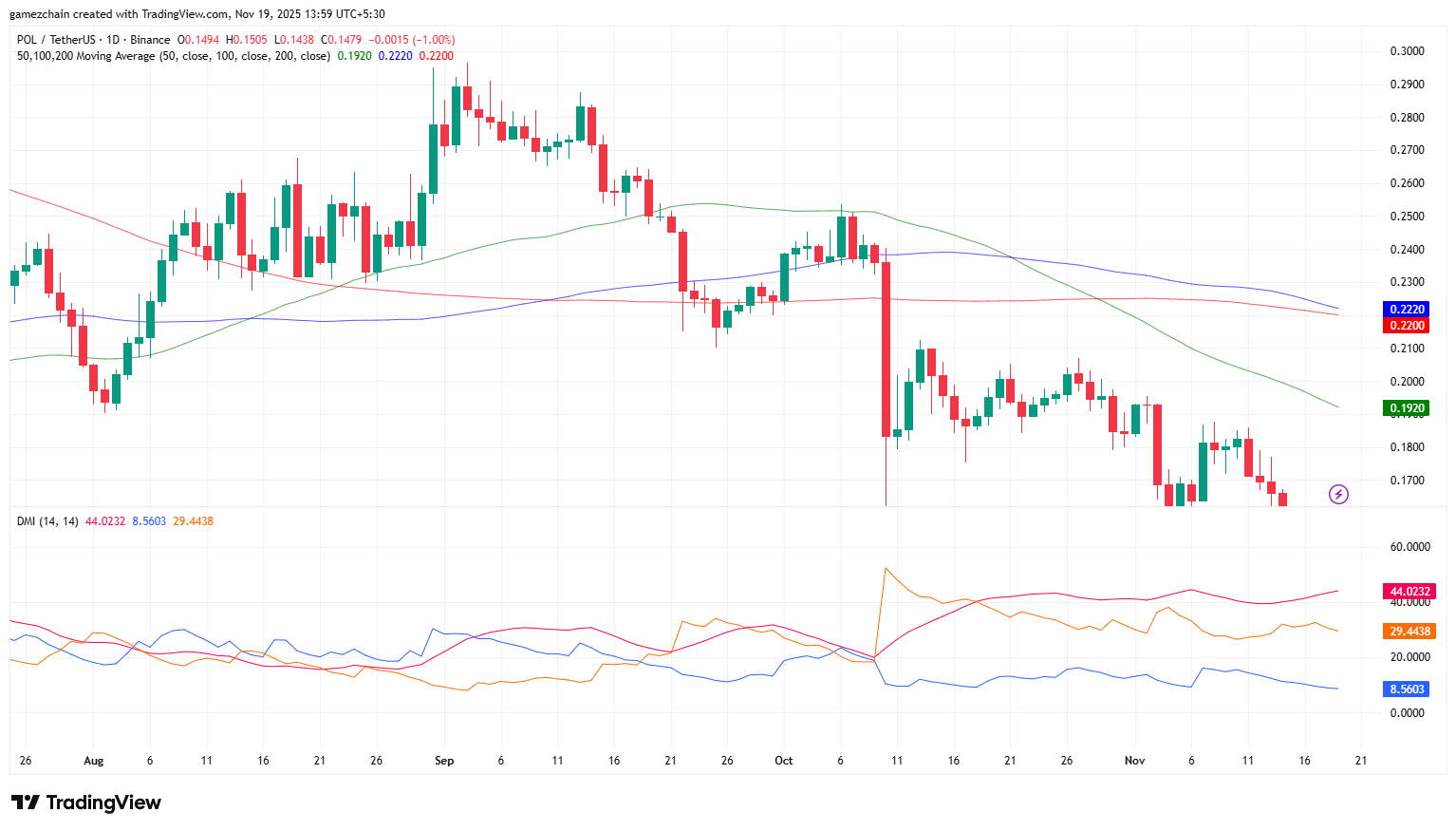Mastercard’s decision to integrate Polygon into its new username-based wallet feature is a major achievement for the blockchain network. Instead of copying long strings of characters to send crypto, users will soon have the option to send funds to a verified username. This system is powered by Mastercard’s Crypto Credential program and built on Polygon’s infrastructure, known for speed, low fees, and developer-friendly tools.
Despite the strong industry attention this partnership has generated, Polygon’s native token, POL, has continued to decline. The contrast between real-world adoption and falling price has left many wondering why the market isn’t responding more positively. To understand this disconnect, it helps to look at what Mastercard is actually building, what Polygon brings to the table, and how token economics differ from network adoption.
What Mastercard Is Building and How Polygon Makes It Possible
Mastercard has chosen Polygon to power a new system that lets people send crypto to verified usernames instead of long wallet addresses!
“Polygon’s network will process these transfers at speed and with low fees. Mastercard said the network can handle a high throughput capable… pic.twitter.com/r7Jo3XWd6l
— Vadim (@crypto_vadim) November 18, 2025
Mastercard’s new system aims to make crypto feel as simple as sending money through everyday mobile apps. Users start by verifying their identity through a provider called Mercuryo. Once verified, they receive a username-style alias that connects directly to their self-custody wallet. This username becomes their public-facing address, removing the need for long wallet strings that are difficult to remember and easy to mistype.
To strengthen trust, users can mint a special on-chain marker called a soulbound token on Polygon. This token simply signals that the wallet holder completed verification. It is not transferable, and it serves as an extra layer of confirmation for platforms that rely on these aliases.
Polygon was selected because Mastercard wanted a network that could handle fast, inexpensive transactions without slowing down during high activity. Polygon’s design supports large-scale applications and makes it easy for companies to build user-friendly products without paying high fees or dealing with slow transactions.
For Mastercard, this partnership is about making digital assets more practical for everyday use. For Polygon, it’s validation that major financial companies view its network as reliable and scalable enough for real consumer applications.
So Why Isn’t POL Rising? Understanding the Disconnect
Even major real-world integrations don’t always produce an immediate rise in token value. That’s because adoption of a blockchain network and demand for its token are related, but not always directly.
In the case of Mastercard’s username system, users are not required to buy POL to use the feature. Most transfers involve stablecoins or other digital assets processed through wallet-to-wallet transactions. While these interactions take place on Polygon’s network, they do not necessarily increase demand for the native token in the short term.

Despite the recent announcement, POL’s price hasn’t reacted positively. At the moment, the token is trading around $0.145, which is a 3.24% drop for the day. The token has also been trading below its key Moving Averages ever since it formed a “death cross” three weeks ago. This is usually a sign that sellers are in control. On top of that, the positive line of the Directional Movement Index (DMI) has been falling steadily and is now down to 9, showing very weak buying strength.
All of this signals that bears completely dominate the market, increasing the chances that POL could drop even further. If the current trend continues, the next likely support level is $0.13. On the other hand, strong demand from Mastercard’s integration could help the token recover and push it back toward the $0.16 level.
Mastercard’s integration gives Polygon a strong foothold in making crypto transactions easier and more familiar for everyday users. It aligns Polygon with one of the world’s largest payment companies and demonstrates that the network can support real consumer-facing tools. Over time, this kind of trust and traction can help solidify Polygon’s position as a leader in Web3 payments.
For POL, the impact may be slower. As more applications rely on Polygon for identity, payments, and verification, demand for network participation could increase. At this stage, Mastercard’s move is a sign of long-term growth rather than a short-term trigger. Polygon is becoming part of a practical payment experience, and while the token is not reflecting that yet, the foundation for future value is being built.
As more major financial companies adopt blockchain tools, do you think token prices will eventually catch up to real-world usage or will the gap between adoption and token value continue to widen?
Stay informed with daily updates from Blockchain Magazine on Google News. Click here to follow us and mark as favorite: [Blockchain Magazine on Google News].
Disclaimer: Any post shared by a third-party agency are sponsored and Blockchain Magazine has no views on any such posts. The views and opinions expressed in this post are those of the clients and do not necessarily reflect the official policy or position of Blockchain Magazine. The information provided in this post is for informational purposes only and should not be considered as financial, investment, or professional advice. Blockchain Magazine does not endorse or promote any specific products, services, or companies mentioned in this posts. Readers are encouraged to conduct their own research and consult with a qualified professional before making any financial decisions.